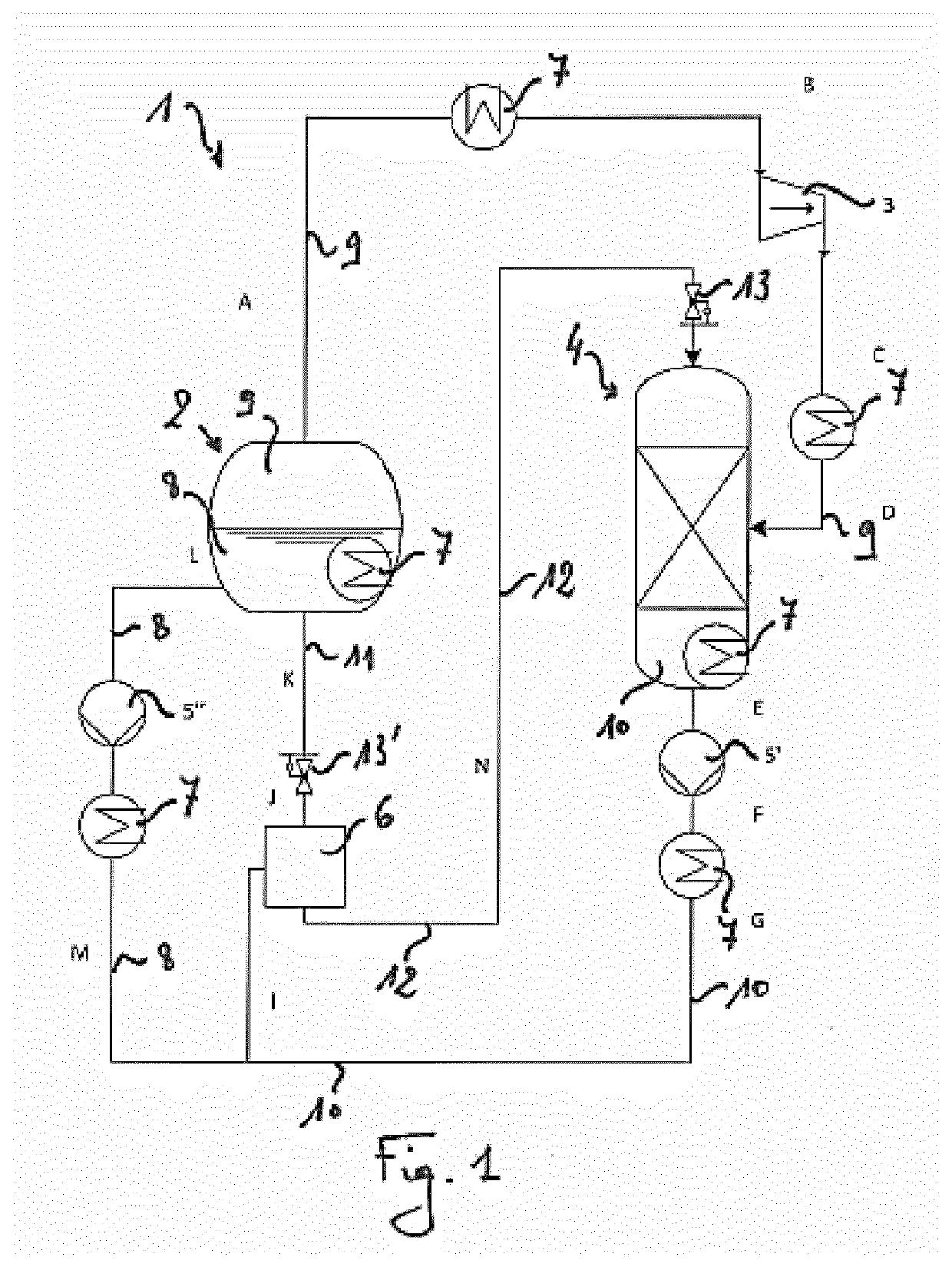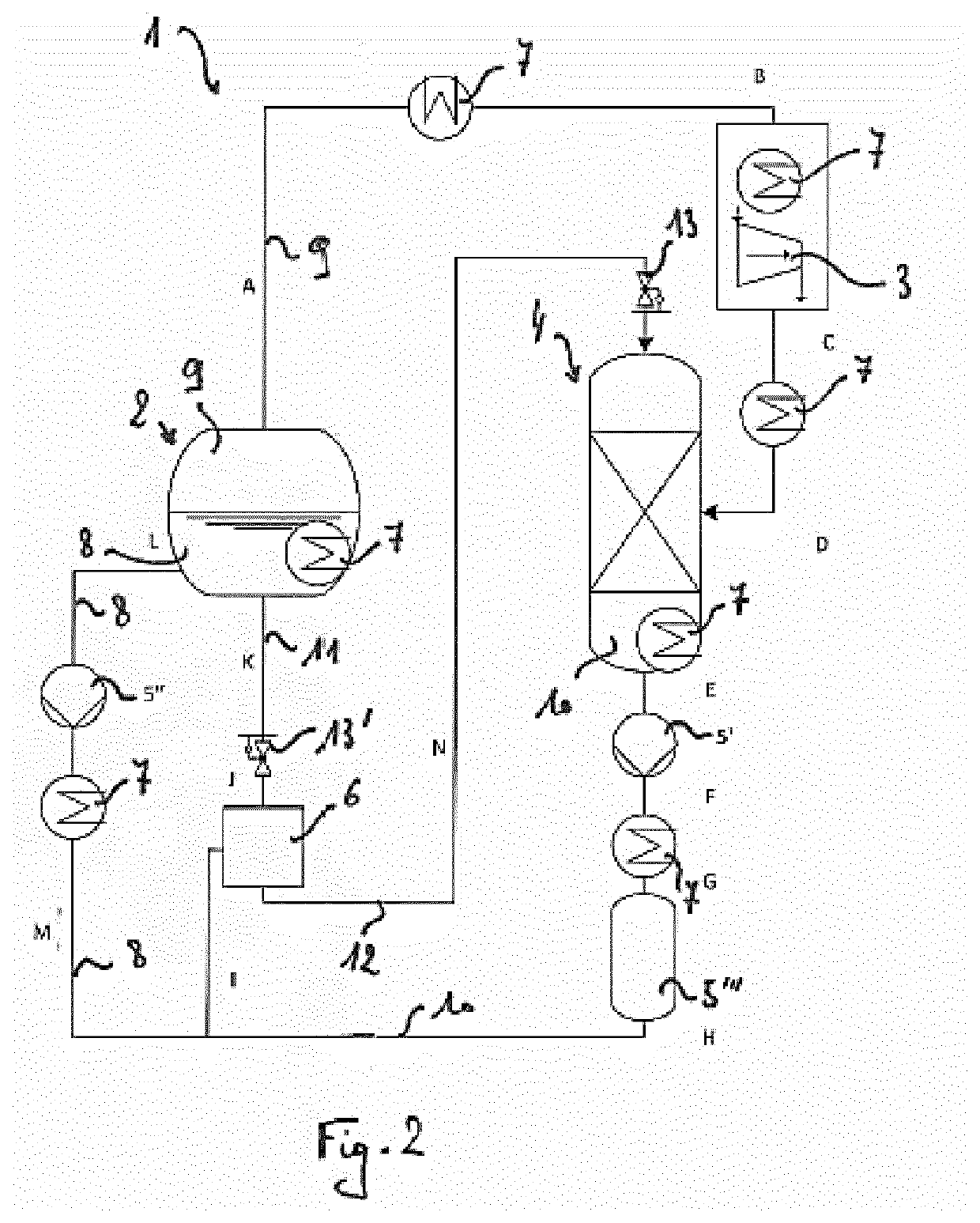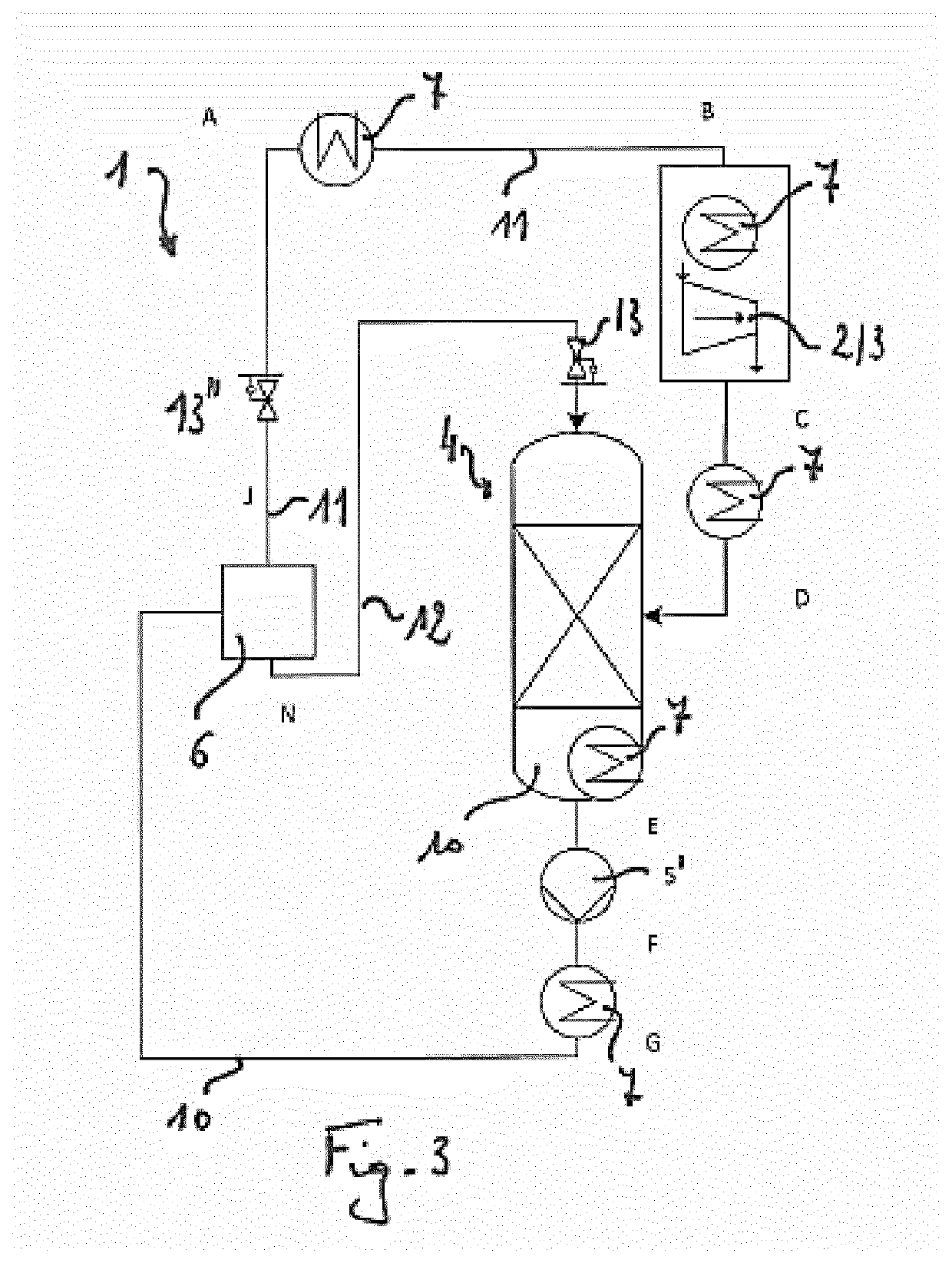Closed-cycle absorption system and method for cooling and generating power
a closed-cycle absorption and cycle technology, applied in mechanical equipment, machines/engines, steam engine plants, etc., can solve the problems of large amount of thermal energy, large thermal energy content, and large thermal energy loss of the cycle, so as to reduce the boiling point, reduce the amount of thermal energy lost, and the working fluid concentration is high.
- Summary
- Abstract
- Description
- Claims
- Application Information
AI Technical Summary
Benefits of technology
Problems solved by technology
Method used
Image
Examples
example 1
[0097]In a possible embodiment, the absorption fluid comprises water, whereby the working fluid comprises carbon dioxide. Assuming that the separator temperature is equal to about 20° C., the absorption mixture will, at pressures of about 57 bar or higher, split into a liquid absorption phase (of water saturated with carbon dioxide) and a liquid working phase (of mostly carbon dioxide). The density of the liquid carbon dioxide thereby amounts to about 775 kg / m3. The density of the water phase can be changed by adding a solute to the absorption fluid. For instance, water including sodium chlorine could be used as absorption fluid, as to make sure that the absorption phase has a substantially larger specific weight than the working phase has. By means of a gravity separation and / or centrifugal force separation process, the working phase is then mostly collected into a working effluent, while the absorption phase is mostly collected into an absorption effluent, based on their differenc...
example 2
[0098]In a possible embodiment, the absorption fluid comprises water, whereby the working fluid comprises ammonia. Assuming that the separator pressure is equal to about 1 bar, the working mixture in the separator may be cooled down to below a solidification temperature for the water—about —100° C. to 0° C., depending on the ammonia content. For working mixtures having an ammonia content of about 30% or lower, a solid and substantially pure absorption phase will thereby be formed. This absorption phase can easily be separated, for instance via filtration. The ammonia concentration in the remaining, liquid phase is thereby increased. As such, at least a preliminary or partial separation of the liquid absorption mixture is performed. However, a lot of latent heat is consumed in the solidification and melting processes, such that the efficiency of the cycle may be relatively low.
example 3
[0099]In a possible embodiment, the absorption fluid comprises water, while the working fluid comprises ammonia. The water-ammonia absorption mixture stemming from the absorber is heated and pressurized. Subsequently it is fed to a separator. The temperature in the separator amounts to about 130° C. Quite advantageously, solutions and mixtures of ammonia and water have very low viscosity values at such raised temperatures. A viscosity of less than 250 μPa·s was observed. At the same time, the pressure in the separator amounts to about 115 bar, thus at / above the condensing point of the pure working fluid (=ammonia). In the latter, the above-mentioned separator temperature was taken into account. The inventor found that, under such conditions, the homogeneous absorption mixture becomes a heterogenous mixture comprising an absorption phase and a working phase. Both are liquid phases.
PUM
 Login to View More
Login to View More Abstract
Description
Claims
Application Information
 Login to View More
Login to View More - R&D
- Intellectual Property
- Life Sciences
- Materials
- Tech Scout
- Unparalleled Data Quality
- Higher Quality Content
- 60% Fewer Hallucinations
Browse by: Latest US Patents, China's latest patents, Technical Efficacy Thesaurus, Application Domain, Technology Topic, Popular Technical Reports.
© 2025 PatSnap. All rights reserved.Legal|Privacy policy|Modern Slavery Act Transparency Statement|Sitemap|About US| Contact US: help@patsnap.com



